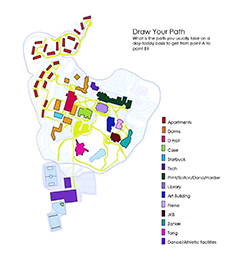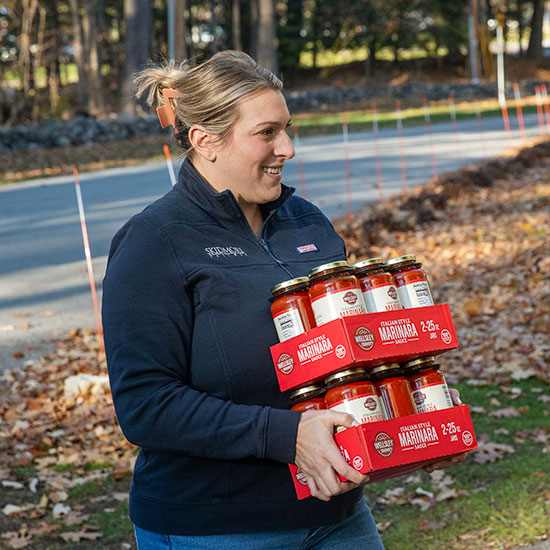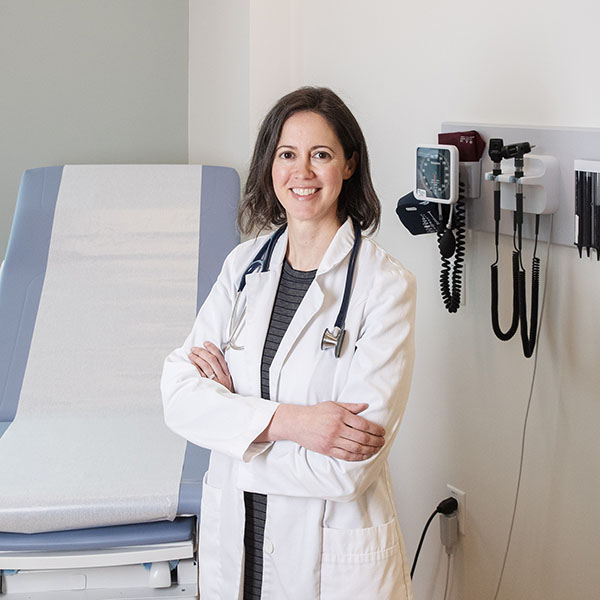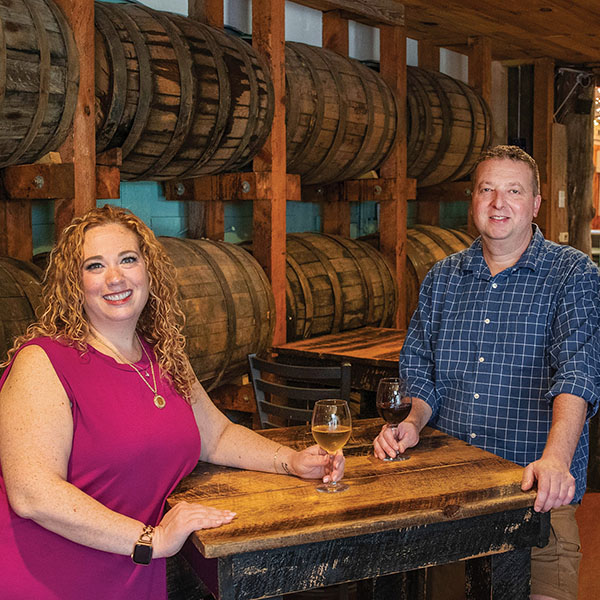Students in space
Eleanor Rochman, a senior art history major, completed a semester-long independent study involving landscape architecture theory as well as app design and implementation. She created an alternative virtual tour of Skidmore, for which her fellow students contributed recordings of place-based memories (including one about campus streaking.
Rochman started the project because of her curiosity about how the built environment shapes, and is shaped by, the culture that exists within it. She explains, “A landscape is shaped by cultural and social values, which manifest themselves physically, but also psychologically, in our perceptions of landscape.”

Rochman's map of where and how students
tend to travel the campus
Campus movement
Rochman first examined an aerial view of campus, to better understand its overall structure. She asked students to think about their movement through space, providing them with a simple map of Skidmore. Around 30 students used the map to consider the way they interact with the campus and to trace their most common pathways. These pathways were layered into one image showing how students’ movements overlap on a daily basis. Some routes are short and efficient, while others are more roundabout, looping through uncommon pathways.
The Skidmore community is small but infinitely interconnected. Students often comment that they see everyone they know each day; however, it is easy to forget how frequently this campus space is shared. Rochman’s study of student movement through Skidmore’s landscape allows community members to visually understand the true extent of interconnectivity that Skidmore fosters.
Rochman acknowledges that “how we move about space can be notably different from how we experience or perceive space.” And the map of students’ daily paths does not indicate what occurs in these spaces and junctions.
Location-based memories
For the next part of her project, Rochman asked students to share place-based memories, with the goal of creating a phone app for the Skidmore community. She recorded 80 stories and located them on an interactive map. The stories are mostly anonymous, though some students identify themselves by name, discipline, club affiliation, or other descriptors, revealing the wide range of student input and perspective. As Rochman says, “We are always in a dynamic process of becoming, as college students trying to figure out where we fit in or how we want to identify ourselves depending on the clubs we belong to, the departments we study with, or the friends we make.”
"Skidmore is a very interdisciplinary environment, so it is inevitable that different community members experience campus in different ways. These individual identities, while they should be celebrated, should not inhibit us from finding common ground on which to relate."
Many of the student stories were not strictly limited to a particular building or centered on the individual’s final destination. Instead, they capture moments shared along commonly used pathways or corners of campus, further highlighting the continuous impact that the built environment has on human interaction and memory.
Rochman, who hopes to make her alternative tour into a free, downloadable phone app in the near future, says she’s grateful for the invaluable support she received from the Art History and English departments, Entrepreneurial Club, Moore Documentary Studies Collaborative, and Tang Museum. —Blair Warren ’17


